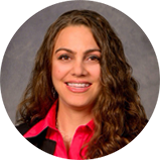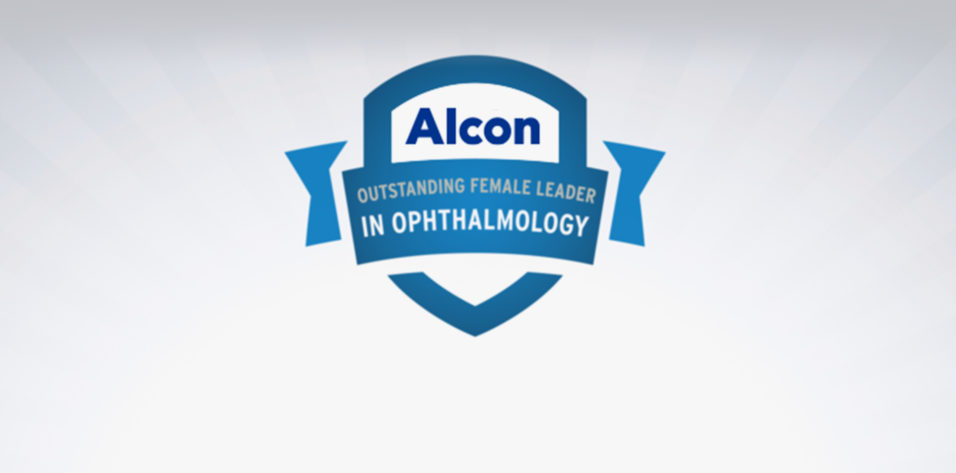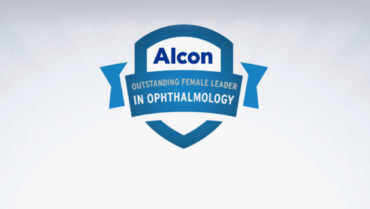
Dr. Nijm is the Founder and Medical Director of Warrenville EyeCare & LASIK in Warrenville, Illinois, and a Clinical Assistant Professor of Ophthalmology at the Illinois Eye and Ear Infirmary in Chicago.
1. Please share with us your background.
I am originally from the Western suburbs of Chicago. I completed my undergraduate degree summa cum laude at Benedictine University in Lisle, Illinois. As an undergrad, I spent a lot of time thinking about different career paths and which I might enjoy most. My dad was an internist, so growing up I observed firsthand how much joy he received taking care of his patients, and I admired the special relationships he had with them. In fact, my first job was in reception at his office in Warrenville, Illinois. Fast forward to today, and that office is now my office. I’ve come full circle, from answering the phones to owning the practice, with a lot of fond memories along the way.
In particular, I strongly recall watching my father navigate the complexities of managed care and champion for his patients to receive appropriate treatment. His advocacy inspired me and taught me the importance of physicians advocating for patients in the health care system. Essentially, through a year-long career search, what solidified was that I loved the idea of taking care of patients, but I also felt a responsibility to be a patient advocate. I thought, what better way to achieve that goal then to become a physician who is familiar with the legal system as a trained attorney?
I subsequently decided to embark on a 6-year, dual MD-JD program at the Southern IIlinois University (SIU) School of Medicine and School of Law, which is one of the most integrated, specialized programs in the country, accepting two students per year. Early in this experience, I had the opportunity to spend a summer in Washington, DC, and work on Capitol Hill through a uniquely designed joint internship between the American Medical Association’s legislative division and the Robert Graham Policy Center (the health policy center of the American Academy of Family Physicians). This was an excellent experience that I still draw upon today, as it gave me invaluable insight into the inner workings of the US health care system and reaffirmed my commitment to health care policy and advocacy for patients and our profession.
The way in which I ended up in ophthalmology was also through the inspiration of my father. While I was at SIU, my dad took me to an eye appointment with Peter Brazis, MD, where he mentioned to Dr. Brazis that I was interested in ophthalmology. SIU did not have a formal ophthalmology clerkship, so I had little exposure to the specialty as a medical student. Dr. Brazis kindly suggested that I spend time shadowing him, so I spent a week observing him the following spring break. On my first day, I was in the OR watching him perform corneal transplants and cataract surgeries. I saw the patients return postoperatively with restored vision and immense gratitude. To this day, I never grow tired of hearing patients’ excitement with their newfound vision and seeing their world open up as their quality of vision and therefore their quality of life have improved.
With a growing interest in ophthalmology, I sought out a medical school advisor who could help me participate in ophthalmic research. That brought me to Randy Peterson, MD, PhD, a high-volume cataract surgeon in Springfield, Illinois, who quickly took me under his wing. Dr. Peterson graciously offered to fund my first research project in intraocular drug delivery. Once I began conducting research in the field, I was hooked. Dr. Peterson also welcomed me into his OR, and during my third year of medical school, he taught me how to make the initial incision in a cataract procedure. At the time, I had no idea what a rare and amazing opportunity this was for me to participate in ocular surgery firsthand while still in medical school.
Following SIU, I completed my ophthalmology residency at the University of Illinois Eye and Ear Infirmary, followed by a corneal and refractive fellowship at the University of California, Davis. After fellowship, I began practicing ophthalmology in Santa Rosa, California. It was a great start, but ultimately far from home. I was recruited back to Illinois by my medical school mentor and started serving patients in regions that had previously lacked corneal specialists. I became the first surgeon in central Illinois to perform femtosecond LASIK and felt grateful to be able to offer the latest technology to the area’s underserved patients.
All of these experiences gave me the gumption to eventually move back to the Chicago suburbs to start my own practice. At this time, my dad was still practicing, so I joined his clinic and we became a multispecialty practice overnight. All of my first patients were his patients, too. To this day, I am blessed to care for patients who were patients of my father’s for over 30 years. Starting my own practice has afforded me the opportunity to open up my career in new ways, to take care of patients how I see fit, and to craft other interests of mine, in law, teaching and research. It's been a long road, but I thank God every day and I am eternally grateful for the support of my family and for the mentors and colleagues that I have had the privilege of working along the way.
2. What is the focus of your recent research?
I recently launched a clinical trials training program for Women in Ophthalmology (WIO) as part of my AAO Leadership Development project. There is currently a paucity of women researchers, and we know that participation in research opens doors to many other types of leadership opportunities, such as speaking, publishing, and advisory board membership. Further, increasing the diversity of clinical trial investigators will lead to real-world outcomes and improved care for patients.
To truly be effective with this program, I first designed a survey that we administered to WIO members to identify the educational gaps and hurdles in starting a clinical trial. We used the results to identify the top areas on which women ophthalmologists need and want more information to become successful researchers. I will be leading a kickoff clinical trials workshop at the 2020 WIO Summer Symposium in August. This will be followed by a year-long curriculum that I am building, in which we will work with seasoned physician-scientist researchers and industry partners to provide training to women ophthalmologists who are interested in becoming excellent clinician-scientists.
3. What has your experience been collaborating with industry?
My experiences collaborating with industry have been extremely positive, and the WIO clinical trials training program is just one recent example. I enjoy the teaching, educational, and speaking opportunities that physician-industry collaboration offers. The opportunity to explore new innovations and partner to develop devices and drugs to advance eye care ends up being a win for patients, physicians, and industry alike.
I have also had positive experiences helping industry partners obtain Medicare pass-through status and have advocated for various companies in front of the FDA and congressional leaders. Collaborating with industry in these ways ultimately relates back to my goals of advocating for patients and increasing their access to new treatment options that improve care.
4. In your opinion, how is the role of women in ophthalmology evolving?
Physician demographics are changing, as we are seeing greater gender parity in the makeup of medical school classes. This translates to an increasing number of female residents, although ophthalmology has not yet achieved a 50/50 split and instead hovers around 37% to 40% female residents based on recent match statistics. Although we have certainly made strides, we have more work to do, particularly surrounding the promotion of women to leadership positions. All-male speaker panels, advisory boards, clinical research committees, and academic department heads are commonplace. Similarly, these trends are present in the ophthalmic industry as well. Often, the gender bias that can contribute to these decisions is implicit, not intentional, and so therefore it is crucial to work in collaboration to draw attention to the issue to affect meaningful change.
5. What hurdles do you feel women in health care still face?
As noted above, many professional society committees, scientific advisory boards, and editorial boards are still predominantly composed of men. Sometimes, in these settings, the inclusion of one or two women ophthalmologists is viewed as sufficient and perhaps even progressive. However, this does not represent inclusivity, and we cannot put a cap on progress until more equal representation is achieved. Ultimately, I hope we reach a point where we are not recognized for being women but are recognized for being outstanding ophthalmologists who also happen to be women.
When I witness a lack of inclusivity in my own professional engagements, I strive to politely call attention to the issue and make suggestions for greater inclusion. I have found that professional engagements are more productive and fruitful when there is a diversity of opinion. It is important to involve everyone, men and women, in these conversations to open dialogue and collectively acknowledge the room for collaboration and improvement. Initiating these conversation is one of the most effective approaches we can take toward exposing and addressing inequal opportunities for advancement.
6. What advice can you offer to young female ophthalmologists who are still in training or just beginning their careers?
I have benefited greatly from having outstanding mentors throughout my career. The importance of mentorship in professional and personal development cannot be overstated, and I would recommend all young ophthalmologists seek out a mentor or even a team of mentors who will invest in their growth.
Additionally, I would encourage female ophthalmologists to align themselves with opportunities that resonate with them professionally and personally. Being involved with WIO, for example, has helped me to further focus on advocating for my patients and my colleagues. I have been fortunate to interact with, teach, learn, and form lasting friendships with some of the greatest female surgeons in our specialty. Not only has WIO given me the opportunity to grow as a leader, but it also has extended the opportunities I have to work with others in improving patient care and serving as an advocate in our profession.
7. Can you propose a unique or creative idea that may help women in ophthalmic practices?
One practice that does not come naturally to many people and to women in particular is negotiation. Men tend to fare better in negotiations, as women may struggle to be assertive, may have trouble giving themselves proper credit, or may feel they are in an environment where negotiation is not an option. Negotiation, however, is a key skill that can and should be learned and has wide applicability across professional and personal endeavors. I teach a negotiation course as part of a three-part series on professional development and have lectured nationally on the topic for many ophthalmology residency programs. Growing this skill can set women ophthalmologists up for greater success in multiple areas of life.
PUBLISHED WORKS
- Hovanesian JA, Kontos M, Nijm LM, Stephenson PDG. What we do now can ease the transition back to ‘normal.’ Cataract & Refractive Surgery Today. June 2020.
- Brothers Arbisser L, Brissette A, Khandelwal SS, et al. The gender gap. Cataract & Refractive Surgery Today. May 2020.
- Nijm LM. CEDARS/ASPENS debates: calculations, low myopia, appropriate expectations are crucial to successfully utilizing presbyopic correcting lenses in the post-refractive patient. Ocular Surgery News. February 2020.
- Nijm LM. 2020: the year of the ophthalmologist. Ophthalmology Management. January 2020.
- Nijm LM. Patient care: dealing with complications. In: CY Weng, AM Berrocal, eds. Women in Ophthalmology—A Comprehensive Guide for Career and Life. Springer; 2020.
- Nijm LM. Year in focus: top apps for ophthalmologists. Cataract & Refractive Surgery Today. November/December 2019: 75-77.
- Nijm LM. Promoting a healthy work environment. Cataract & Refractive Surgery Today. October 2019: 93-94.
- Groves N, Reviewer: Nijm LM. Flying solo poses challenges, flexibility and support vital. Ophthalmology Times. July 2019: 36.
- Hillman L, Expert Contributor: Nijm LM. Lid margin disease: diagnostic and therapeutic update. EyeWorld. June 2019: 46-48.
- Nijm LM. A primer on pass-through status. Cataract & Refractive Surgery Today. June 2019.
- Nijm LM. Point/counterpoint: in your experience, what are the most effective strategies to prevent professional burnout? Ocular Surgery News. May 2019: 11.
- Nijm LM, Dunbar GE. Understanding the science behind inflammation in dry eye. US Ophthalmic Review. 2019;12(1).
- Nijm LM. Before 5:00 pm. MillennialEYE. November/December 2018.
- Nijm LM. Legal implications of off-label use. Cataract & Refractive Surgery Today. September 2018: 31-32.
- Nijm LM. Improving vision and lives with cataract surgery. Cataract & Refractive Surgery Today. March 2018: 16-18.
- Balakrishnan A, Banta JT, Nijm LM, McCabe CM. Cataracts in a patient with severe neck contracture. Cataract & Refractive Surgery Today. November/December 2017.
- Kontos M, Nijm L, Waring GO IV. Overcoming challenges when starting a practice. MillennialEYE. July/August 2017.
- Nijm LM, Mannis MJ, Holland EJ. Evolution of contemporary keratoplasty. In: Krachmer JH, Mannis MJ, Holland EJ, eds. Cornea. 4th ed. Mosby; 2016.
- Nijm LM, Parsons M. Factitious keratoconjunctivitis. In: Krachmer JH, Mannis MJ, Holland EJ, eds. Cornea. 4th ed. Mosby; 2016.
- Nijm LM. Blepharitis: classification. In: Holland EJ, Mannis MJ, Lee WB, eds. Ocular Surface Disease: Cornea, Conjunctiva and Tear Film. Elsevier; 2013.
- Nijm LM. Antiviral medications. In: Copeland R, Afshari N, eds. Cornea: A Two-Volume Text. Jaypee Brothers International; 2013.
- Feiz V, Nijm LM, Glickman RD, et al. Vitreous and aqueous penetration of orally administered trimethoprim-sulfamethoxazole combination in humans. Cornea. 2013(32):1315-1320.
- Nijm LM. Antibiotics for endophthalmitis prophylaxis in cataract surgery. Advanced Ocular Surface. September 2011: 1-2.
- Nijm LM, Mannis MJ, Holland EJ. Evolution of contemporary keratoplasty. In: Krachmer JH, Mannis MJ, Holland EJ, eds. Cornea. 3rd ed. Mosby; 2011.
- Nijm LM, Parsons M. Factitious keratoconjunctivitis. In: Krachmer JH, Mannis MJ, EJ Holland, eds. Cornea. 3rd ed. Mosby; 2011.
- Nijm LM, Ferrer FG, Schwab IR, et al. Conjunctiva and tears. In: Riordan-Eva P, Cunningham E, eds. Vaughan and Asbury’s General Ophthalmology. 18th ed. McGraw-Hill; 2011.
- Davis LT, Kumar N, Nijm L, et al. An adaptable HPLC method for the analysis of frequently used antibiotics in ocular samples. J Chromo B. 2010;878(26):2421-2426.
- Nijm LM. An update on refractive litigation. Advanced Ocular Surface. September 2010: 25-26.
- Trattler WB, Nijm LM. Corneal topography: a basic primer. Cataract & Refractive Surgery Today. August 2009.
- Tu EY, Joslin CE, Nijm LM, et al. Polymicrobial keratitis: Acanthamoeba and infectious crystalline keratopathy. Am J Ophthalmol. 2009;148(1):13-19.
- Nijm LM. The pitfalls of peer review: a discussion on the limited protections of state and federal Peer Review Law for Physicians. Journal of Legal Medicine. 2003: 541-550
- Nijm LM. Improving the quality of health care. Virtual Mentor. 2004;6(6).
- Nijm LM. Limitations on filing wrongful death actions related to medical malpractice suits: Okeke v. Craig. Journal of Legal Medicine Perspectives. 2001.
- Nijm LM. Being declared a qualified health care provider under the Louisiana Medical Malpractice Act: St. Paul Fire and Marine Insurance Company v. Eusea. Journal of Legal Medicine Perspectives. 2001.
- Nijm LM, Liang B. Physician unionization: white coats with blue collars? Hospital Physician. May 2001: 71-75.
- Nijm LM. The online message board controversy: physicians hit with claims of libel and insider trading by their employers. Journal of Legal Medicine. June 2000: 223-239.
- Nijm LM. Children’s online privacy rights: who will protect them? National Association of Counsel for Children Law Manual Series: Kids, Court, and Community: Providing Children Access to Justice. 1999: 337-369.
PROFESSIONAL SOCIETY MEMBERSHIPS
- Women in Ophthalmology (WIO), CEO and Past President
- American Academy of Ophthalmology (AAO)
- American Society of Cataract and Refractive Surgery (ASCRS)
- CEDARS/ASPENS
- American Medical Association (AMA)
- Illinois Society of Eye Physicians and Surgeons (ISEPS)
- Cornea Society
HONORS AND AWARDS
- AAO Leadership Development Program XXII, Class of 2020 | 2020
- America’s Most Honored Doctors | 2020
- Castle Connolly Top Doctor Award | 2020, 2019
- Castle Connolly Exceptional Women in Medicine Award | 2020, 2019
- Illinois Top Doctor Award | 2020, 2019
- Ophthalmology Power List, 50 Most Influential Ophthalmologists Worldwide 2019, Category: Champion for Change, The Ophthalmologist | 2019
- Rising Star Alumni Award, for Outstanding Accomplishments in Profession and Community Service, Benedictine University | 2019
- Northwestern Medicine-Central DuPage Hospital 50th Anniversary Heroes in Medicine
- AAO Achievement Award | 2012
- Founding Member, Vanguard Ophthalmology Society | 2009–2011
- Outstanding Fellow Research Presentation, Annual Symposium 2009, University of California at Davis, Department of Ophthalmology and Visual Sciences | 2009
- Association of Research and Vision in Ophthalmology Summer Conference Travel Recipient, Ophthalmic Drug Delivery Systems for the Treatment of Retinal Diseases: Basic Research to Clinical Application | 2009
- Best Poster Award, AAO, Joint Meeting Scientific Program | 2008
- Beem-Fisher Award for Outstanding Resident Research, 2nd place, Chicago Ophthalmological Society | 2008
- National Eye Institute Travel Grant, Association of Research and Vision in Ophthalmology, Annual Meeting: Eyes on Innovation | 2008
- Appointed by AAO to serve as Representative of the Academy to the Resident and Fellows Section of the AMA and subsequently as Representative to the Young Physicians Section | 2008–2010
- Nominated by Illinois Association of Ophthalmology to Attend Mid-Year Forum Leadership and Advocacy Conference in Washington, DC | 2007
- Honorable Mention, 3rd Annual AMA-RFS Research Poster Symposium in Public Health Policy and Medical Education Category | 2006
- Who’s Who in America | 2004–2010


